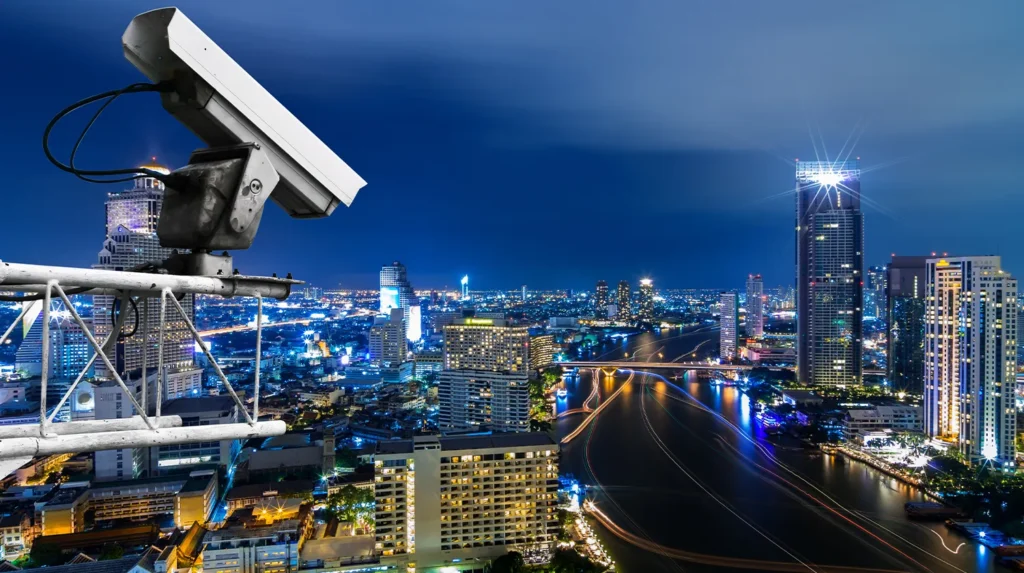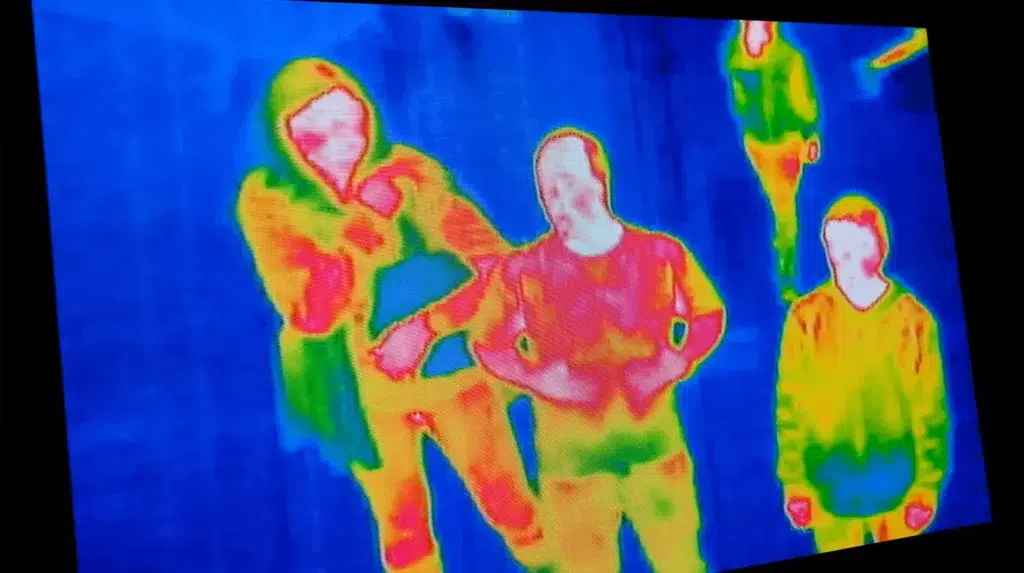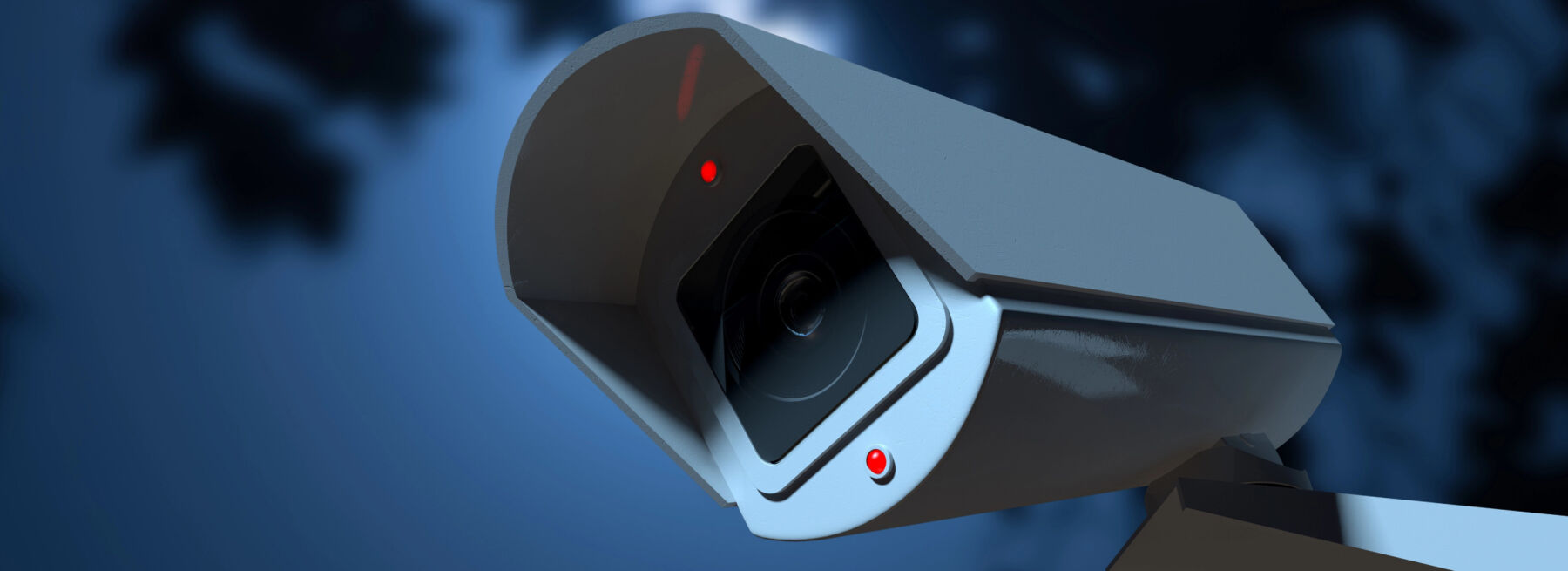Night vision cameras work by capturing images in low-light or no-light environments using infrared illumination, thermal imaging, and light amplification. Understanding how night vision cameras work is important for security systems as they provide visibility in the dark and enhance surveillance. This article explains the technologies behind how night vision cameras work and how they make imaging in the dark possible.
Key Takeaways
- How night vision cameras work is by using infrared illumination, thermal imaging, and advanced image processing to enhance surveillance in low light.
- When choosing a night vision camera consider the resolution, effective infrared illumination range, and smart features for monitoring.
- Daytime performance is important for how night vision cameras work. IR cut filters ensure accurate color and detailed images during the day.
The Basics of How Night Vision Cameras Work

Night vision cameras are an important part of modern security setups. They can monitor and record where standard cameras can’t due to lack of light. They make sure key areas are observable even when there’s no ambient light by capturing clear images in low-visibility environments thus mitigating major weaknesses of traditional security systems.
The technology used in how night vision cameras work involves multiple approaches such as advanced illumination methods, low-light camera amplification, and thermal imaging sensors. The camera’s image sensor plays a big role in low-light performance by filtering out ambient light and converting it to clear images. These technologies enhance the camera’s ability to get detailed images at night, making them a must-have for total security surveillance.
What are Night Vision Cameras?
Night vision cameras are devices designed to work in environments where there is little to no light. They play a big role in surveillance when it’s dark, to provide continuous monitoring. These cameras use advanced sensors to record images at night, thus they are a must-have in areas with low light conditions. This includes understanding how night vision works in these devices and how other features such as color night vision and general features work in this kind of technology.
Several technologies make these visual cameras possible at night. One is infrared illumination, which allows the cameras to capture details invisible to the human eye. Starlight technology allows them to produce colored images even in very low ambient light. Infrared night vision works by using infrared LEDs to illuminate the camera’s field of view with light that’s invisible to the human eye, so you can get a clear image in total darkness. Thermal imaging works by detecting heat patterns from objects or individuals. This allows detection even in pitch black where traditional light-based visibility is zero.
Key Technologies in Night Vision
How night vision cameras work is by relying heavily on night vision technology to work, with infrared illumination being a major component. This technology uses invisible light that allows the camera to produce clear images by lighting up its surroundings with LEDs that emit infrared light even in zero visible light.
For infrared illumination, image enhancement technologies are important to refine footage in low light. These digital sensors take in whatever light is available and use complex algorithms to boost it. By amplifying visible and near-infrared light, these methods produce a green-tinted output that enhances contrast and details in the scene.
Infrared Illumination: Seeing in the Dark

How do night vision cameras work in the dark? They use infrared light to see in areas with little to no ambient light, a spectrum of light that’s invisible to the human eye. This feature is important to get clear images even in dim or total darkness and to utilize night vision capability powered by this technology.
The emission of infrared illumination allows these vision cameras to work in total darkness by detecting objects and movements that are usually hidden from view. So, this type of illumination is a major component in night vision security systems designed for 24/7 surveillance and protection in low light conditions.
How Infrared Illumination Works
How night vision cameras work is by using infrared light to produce images when there’s no visible light. Infrared LEDs are a major component in this technology by emitting an invisible light that brightens the scene for the camera without being detectable by human eyes. When it gets dim, these IR LEDs are triggered so the night vision cameras can continue to work.
The quality of images at night depends on how strong the infrared illumination from these LEDs is. A stronger output from well-aligned IR LEDs produces higher quality and detailed images in low light. Understanding how these components work is important if you’re looking to get a night vision camera that meets your surveillance needs.
IR Cut Filters
Mechanical shutters called IR cut filters are placed between the lens and sensor of a night vision camera. They block infrared light when it’s bright outside to ensure accurate color representation in the images. This blocking is important to preserve high daytime image quality since excessive infrared light can produce overexposed images with distorted colors.
By blocking infrared light, these filters allow the camera to smoothly transition from daylight to nighttime. In sunlight, the filter blocks IR light from entering, so colors are true to life. When it’s dark, it steps aside, allows infrared light to enter, and improves visibility in low light – this is important for 24/7 monitoring.
Thermal Imaging: Detecting Heat Signatures

Thermal imaging is a major technology In night vision, with advantages for security and monitoring. Unlike infrared illumination, it doesn’t rely on external light sources by capturing heat emissions from objects. This allows cameras with thermal imaging to produce images in zero ambient light.
Thermal imaging is most useful where traditional night vision fails, like in a smoke or dust-filled environment. A major drawback is it doesn’t capture details as precise as other night vision technologies. However, its ability to detect temperature differences makes it essential for some security applications.
Functionality of Thermal Imaging
How night vision cameras work with thermal imaging technology is by capturing the temperature difference between objects. They use microbolometers to detect different amounts of infrared light which are then converted to images of heat signatures.
Since these cameras can identify heat patterns, they can see even in zero light and when there’s smoke present. So thermal night vision cameras are very useful for security where visual clarity is important regardless of the lighting condition.
Applications of Thermal Imaging
Used in security and law enforcement, thermal imaging can monitor vast areas and detect intrusions. The technology triggers alerts when it detects heat signatures.
For police agencies, thermal imaging is unbeatable in locating suspects and investigating crime scenes where it’s dark. Officers get an advantage during operations because this tool allows them to easily see through smoke and obscurity.
Image Enhancement: Amplifying Low Light

Image enhancement technologies are designed to increase the ambient and visible light present, even amplifying light that’s invisible to the human eye. These systems use advanced algorithms to refine and magnify the incoming light to produce sharper and clearer images. But they have one limitation: absolute darkness can hinder their ability to work.
Classic image enhancement uses intensifier tubes that amplify both infrared and visible light to produce an illuminated image. The modern approach uses digital sensors with advanced image processing. This allows cameras to produce clear images in low-light conditions. Night vision goggles use intensifier tubes to amplify the available light, including infrared to produce the green glow that enhances visibility in low light.
The Role of Image Sensors
Night vision cameras use image sensors, often CMOS, to convert light into electronic signals by changing photons into electrons. This amplifies the light signals and makes the images brighter. Through the microchannel plates in the intensifier tubes, a night vision camera’s image sensor amplifies these electrons even more to boost brightness.
In low light conditions, these advanced sensors allow you to see clearly with night vision cameras without relying on external light sources. The performance of the image sensor greatly affects how well a night vision camera performs in low light.
Starlight Technology
How do night vision cameras work with starlight technology? They use the available light from the environment such as stars or streetlights to produce color images in low light. These advanced sensors in the camera perform best even in very little ambient light.
Using this ambient light, night vision cameras work with starlight technology to perform better than other night vision systems that will fail in the same condition. Their ability to produce clear and colored images greatly enhances the capability of night vision devices in different scenarios where lighting is limited at night.
Choosing the Right Night Vision Security Camera
Selecting the right night vision security camera requires examining many factors that make it work better. Consumer cameras lack the internal components to work well in low light, unlike commercial cameras. So, a thorough check of the features and specs of the camera is necessary.
For a surveillance camera to work effectively in securing a premise, it must produce clear images in different lighting conditions. This means delivering a top-notch performance both day and night to have continuous and reliable monitoring.
Resolution and Image Quality
Capturing clear and sharp images at night is crucial when understanding how night vision cameras work. The optimal resolution for these cameras is 4K for the best result, 2K as the second best, and 1080p as the minimum HD. But remember that night vision cameras with higher resolution require more bandwidth and more storage space for the recorded footage.
To get the best out of your camera with night vision, there must be a balance between the resolution and storage capacity. Choose a camera with the right resolution for you. It allows you to see detailed images of nocturnal activity without exceeding your storage capacity.
IR Illumination Range
The performance of a night vision camera is affected by the range of IR illumination, with 100 feet as the optimal range for best night vision. Make sure to align the IR illuminators with the field of view of the camera to get the most out of it.
This range allows you to capture clear images even at far distances, so you can monitor larger areas. Knowing how far the IR illumination goes is important when selecting a night vision camera for your specific monitoring needs.
Smart Features
Having smart features plays a key role in how night vision cameras work. Features like motion detection, mobile notifications, spotlight activation, and time-lapse recording, can enhance continuous monitoring and security measures. These sensors detect movement quickly and send alerts directly to your smartphone or tablet, so you’ll be informed of any activity around your premises at all times.
Including smart features makes vision cameras a more versatile and powerful tool for security and adds more layers of protection. Make sure to consider these smart features when selecting a night camera. It can help you effectively monitor activities at night.
Daytime Performance Matters
It is also important to test the performance of how night vision cameras work during the daytime and not just in low light. Clear and sharp images during the daytime are important to capture features like facial recognition, license plate numbers, and designs on clothes. This ensures continuous monitoring day and night.
To preserve good image quality during the day, IR cut filters are important to block unnecessary infrared light from affecting the footage. Without these filters, images captured during daytime will be faded or distorted which will compromise the security camera’s performance. So, make sure to consider how a camera performs under bright conditions when you want all-around security monitoring.
Benefits of How Night Vision Security Cameras Work

How night vision cameras work is important for security when darkness can impede visibility. They provide continuous monitoring, watching over critical areas even in zero-light conditions. This feature is important for securing properties and overall security.
Equipped to deter potential intruders and capture clear images of facial features and license plates at night, these surveillance cameras are highly effective. Night vision features help in gathering evidence and preventing criminal activities.
How Night Vision Cameras Work to Revolutionize After-Dark Security and Surveillance
The world of security and surveillance has been changed by night vision technology advancements which include thermal imaging, image enhancement, and IR illumination. To get the most out of a night vision camera, you must consider factors like resolution, IR illumination range, and smart features.
By using the latest night vision technology, you can enhance your security. This technology provides protection and defense against potential threats. As technology advances, you can expect to see more applications for low-light conditions at night, including cameras with additional features.
To learn more about how night vision cameras work and the role they play in helping protect commercial properties from criminal and other unwanted activity, pick up this free guide, “Thermal Cameras: See What Others Cannot” Still have questions? Contact us.

